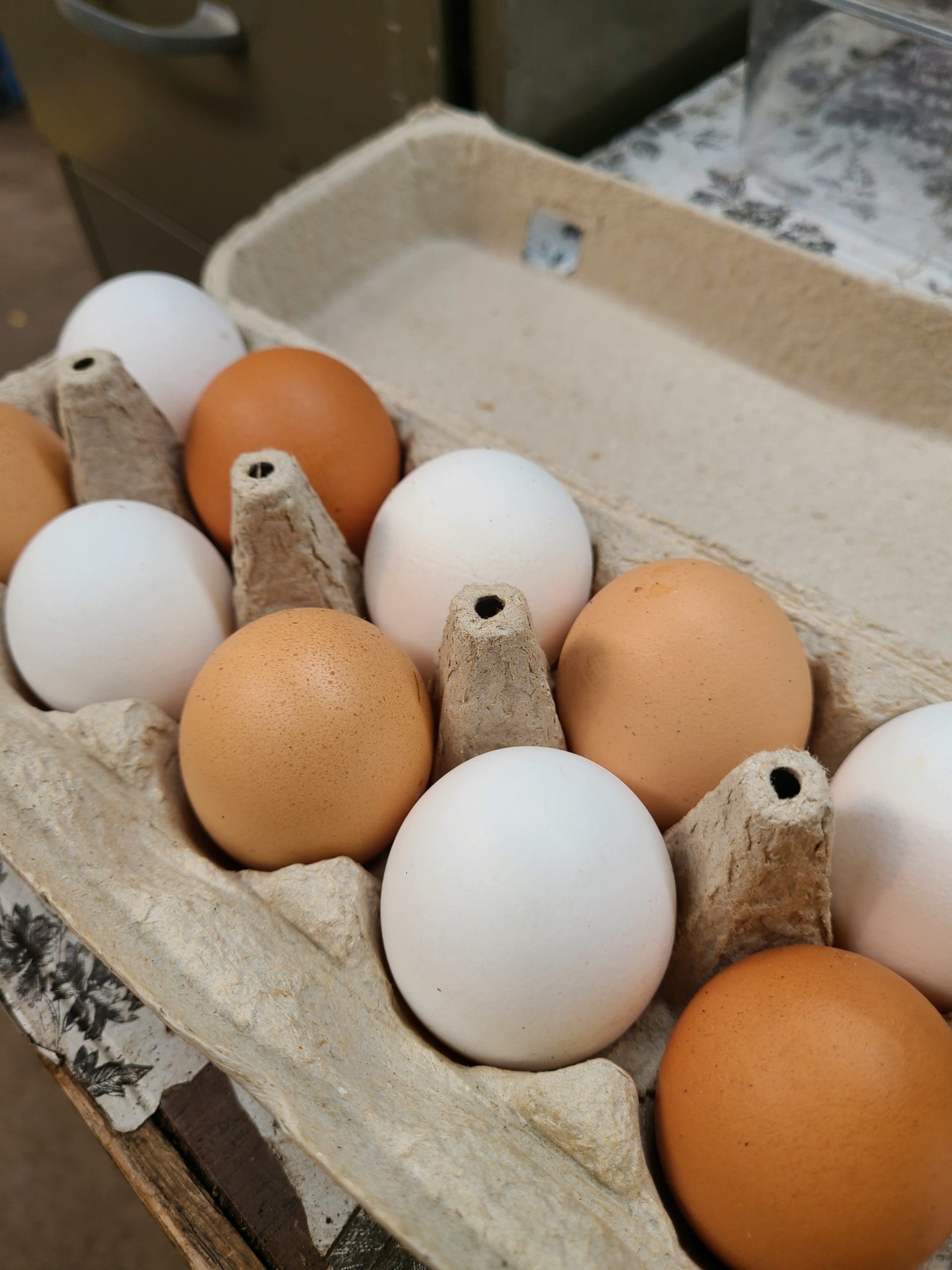Plus, we’ve got tips on how to keep them fresher, longer.

Eggs are considered a superfood for good reason. Though small and savory, eggs pack a mighty nutrient-dense punch that’s rich in essential macros and micros, including protein, omega-3 fatty acids, vitamin D, vitamin B12, and more. In fact, Americans are so eggstatic over eggs that we consumed an average of 277 eggs per person in 2022—and this number is expected to climb slightly above 288 eggs per capita by 2023, according to data from Statista.
Despite our collective love affair with eggs, recent shortages resulting from the latest avian flu outbreaks coupled with inflation and rising food costs across many grocery categories have made this fragile food a more precious commodity. So when you do find yourself a gorgeous carton of fresh eggs while grocery shopping, you’ll surely want to get the best out of your investment. This means not allowing your eggs to go to waste before you’re ready to eat and enjoy them.
But how long do eggs stay fresh, and how can you tell whether or not your eggs have gone bad? Keep reading to learn how to tell if your eggs are past their prime—and for more tips on keeping food fresh, be sure to check out How To Prevent Avocados From Going Bad Too Quickly, According to Chefs.
How long do eggs last?

According to the USDA, eggs have a fairly long shelf life. After being refrigerated at 40°F or slightly below, raw eggs still in their uncracked shells can last for three to five weeks. However, the clock on their freshness really begins before they are even distributed to grocery stores.
Every carton sold by major and minor grocery stores should include the following three imprints: a pack-by date, best-by date, and sell-by or expiration (EXP) date. The “pack-by” date denotes the day that the eggs were originally packed in their carton. Typically, this is a three-digit number that falls between 001–365, with each trilogy of digits corresponding to a day in the year. For example, “001” represents January 1, and “356” stands for December 31. So, if your eggs were packaged on February 17, the pack-by date on the carton would say “048.”
The “best-by” date tells you how long the eggs are expected to maintain their Grade A quality status, which is roughly around 28–35 days after they are packaged. Readers Digest notes that according to the USDA, eating eggs beyond their best-by date can still sometimes be safe, but be warned that this can also impact the quality of their taste. For the freshest eggs, always be sure to pick up a carton before the “best-by” date. The EXP date notes the last day your eggs are projected to still be good.
Although these numbers are a useful gauge of freshness, it’s important to note that these are merely indicators. As the USDA notes, “Inspection, for wholesomeness, is mandatory but grading, for quality, is voluntary.” Additionally, the University of Nebraska–Lincoln Institute of Agriculture and Natural Resources explains that “use of either a ‘Sell-By’ or ‘Expiration’ (EXP) date is not federally required, but may be state required, as defined by the egg laws in the state where the eggs are marketed. Some state egg laws do not allow the use of a ‘sell-by’ date.”
This lack of federal oversight suggests that keeping your eggs fresh beyond their projected expiration is kind of a luck of the draw. But you don’t have to roll the dice and risk illness by consuming spoiled food to determine whether or not your eggs are still good. Between the use of your five senses and a few helpful hacks, you can easily make sure they’re still safe enough to eat while also prolonging their shelf life.
How do you know if your eggs are past their prime?

Before you add a carton of eggs to your cart, open it up and check for cracks in the shells. Even if you see a hairline fracture on the external surface of your eggs, consider that carton unsalvageable and do not take them home. Other visual cues signifying a bad batch of raw, in-shell eggs include a slimy or powdery surface.
You can also check an egg’s freshness by testing its buoyancy. If after (carefully) dropping your raw, still-shelled egg into a bowl of cold tap water you see that it floats, chances are it’s an old one. Although this doesn’t mean it’s necessarily unsafe to eat, it’s worth mentally clocking this observation before testing its scent.
Perhaps the easiest, most telltale sign to know whether or not your eggs are still good or if they’ve spoiled is to give them a quick whiff. Whether cooked or raw, rotten eggs have a distinctly pungent, sulfuric-like stank—so if your eggs smell funky and it’s well beyond the EXP date, it’s time to toss them out.
Tips for keeping your eggs fresh
Here are a few recommendations to help support and sustain the freshness of your eggs:
- After picking up your eggs from the grocery, get them home and into your fridge ASAP. Don’t let them sit out for two hours or more at room temperature.
- Avoid putting your eggs in the door of the fridge. This not only makes them susceptible to cracking, but this area also tends to run at a slightly warmer temperature in most fridge models, which can accelerate their aging while depleting the quality.
- Keep your eggs in the carton they came in. These containers are designed to minimize water loss and mitigate the absorption of other food flavors in your fridge, which can adversely impact the eggs’ taste quality.
- For the freshest eggs, you’ll want to keep them in the coldest part of your refrigerator, which tends to be toward the back near the thermostat. As previously mentioned, the sweet spot for freshness is about 40°F if not lower.
- Source: https://www.eatthis.com








